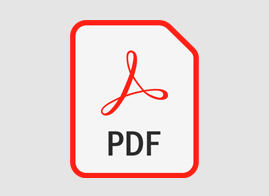Introduction
Child abuse linked to faith or belief is not confined to one faith, nationality or ethnic community. Examples have been recorded worldwide across various religions including Christianity, Islam and Hinduism.
Faith abuse is often considered as part of the group that comes under the umbrella term of harmful practices.
Need more?
Thank you for visiting our resources pages. These are free to everyone as is our fortnightly safeguarding bulletin – general safeguarding information is too important to restrict. Become a member to access lots more, including training materials for you to deliver in-house on each topic in Keeping Children Safe in Education.
Sign up for FREE fortnightly bulletin.
What about training?
We can deliver training for your setting on this and other subjects via online platforms, or face-to-face in certain areas. Just get in touch to discuss your requirements.
Definition of abuse linked to faith or belief
Child abuse linked to faith or belief can include a belief in concepts of:
- witchcraft and spirit possession, demons or the devil acting through children or leading them astray (traditionally seen in some Christian beliefs);
- the evil eye or djinns (traditionally known in some Islamic faith contexts) and dakini (in the Hindu context);
- ritual or multi murders where the killing of children is believed to bring supernatural benefits, or the use of their body parts is believed to produce potent magical remedies;
- use of belief in magic or witchcraft to create fear in children to make them more compliant when they are being trafficked for domestic slavery or sexual exploitation.
What do we know?
Research has suggested that in communities where there is child abuse linked to faith or belief, sometimes there is:
- a community belief in things such as witchcraft;
- an influential person who promotes ideas such as people being possessed whilst also promoting abusing the child as the solution.
Coupled with this, parents/carers/abusers are more likely to have the belief that what they are doing will save the child, the family or the wider community and therefore it is for the greater good.
DfE Child in Need assessments data reports that, in 2023, the abuse of 2,140 children was linked to faith/beliefs.
Examples of abuse linked to faith/beliefs include children being:
- beaten;
- burnt;
- cut/stabbed;
- semi-strangled;
- tied up;
- or having chilli peppers or other substances rubbed on their genitals or eyes.
They may not be allowed near, or to share a room with, family members and/or be threatened with abandonment. They may also be persuaded that they are possessed. Appropriate medical care, supervision, education, good hygiene, nourishment, clothing or warmth may be withdrawn.
Children who have been singled out in this way can be particularly vulnerable to sexual abusers within the family, community or faith organisation that use the belief as a form of control/threat. Exorcisms/deliverances may include sexually abusive practices such as having to undress and be bathed in the presence of others. Child traffickers may use these beliefs to control children.
It should be noted that a child can be abused because of faith or belief without these factors being present and not all those who believe in witchcraft or spirit possession harm children.
Additional vulnerabilities
Children of all ages and gender can be vulnerable to this form of abuse, however, children may be singled out for being ‘different’. Children with behavioural issues and/or additional needs or disabilities may be seen as possessed, as may children who are gifted and talented. If a child has recurring ill-health or is the result of a difficult pregnancy, this may also lead to them being singled out. It may be decided that a particular child in the family is responsible for the misfortunes/difficulties within the family.
Children living with extended family or carers other than their parents, particularly those in private foster placements, can be at increased risk of abuse linked to faith or belief
Spot the signs
Children may or may not know what is happening, however, you may:
- hear children talking about being evil, having the devil beaten out of them, and/or using specific words, e.g., kindoki, djinn, juju or voodoo;
- see children’s behaviour change, for example becoming isolated, confused or withdrawn;
- see a child’s appearance change, often deteriorating e.g., losing weight, wearing dirty clothes;
- notice they start constantly wearing specific items such as unusual jewellery or ornaments to “protect them”;
- notice a change in their school attendance, or they suddenly go abroad for a long holiday;
- notice injuries such as bruises, cuts and burns, or historical injuries and scarring
What to do
As with all safeguarding matters, you must do something. You cannot pass it off as being “part of their culture” or worry about disrespecting the family’s beliefs. If you have concerns, you must act and speak with your designated safeguarding lead.
While different faiths/beliefs/communities/families have different practices, the definitions of physical, emotional and sexual abuse, and neglect still hold true.
It may be that you do not feel you have enough knowledge or experience of a particular family’s culture or practice, however, all you need to ask yourself is: is this harming or likely to harm the child?
There is always a duty to keep the child safe, but when dealing with any allegation of child abuse linked to faith, belief, and/or cultural practices, agencies must also engage with individuals, families, and in some cases the wider communities, to challenge the belief that underlies the harm. You may have a role in this, but your primary focus remains the child’s safety.
Ensure children/young people know the risks – talk about these issues at an age-appropriate level in the same way we do about consent, other forms of harm and other issues.
Check children and young people have safe relationships – in their families, with their peers, and with staff. Create an environment where it’s okay to talk even about the most difficult things.
Know the signs and know what to do – use the checklists above, your safeguarding procedures and be confident in raising these issues as a possibility.
Take action – and keep taking action until you know children and young people are safe.
Resources
-

Branded a Witch – Mardoche’s Story
-

Mardoche Yembi – Advice for Professionals
-

Child abuse linked to faith or belief: An overview
-

Resources for child abuse linked to faith or belief
-

Child abuse linked to faith or belief
Save time and improve your safeguarding approach…
Bite-size training materials to share with your staff every month.
Support to explore and develop your safeguarding culture.
A huge array of resources and professional experience at your fingertips.
Get in touch now for a personal tour of the site and details of membership benefits.
We look forward to working with you.

